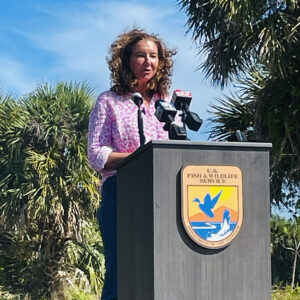Region Spans 12 Counties West of Lake Okeechobee, Including Watersheds Critical to Florida’s Water Quality
 Myakka City, FL — Today, Florida Conservation Group (FCG) Executive Director Julie Morris joined Secretary of the Interior Deb Haaland to announce the establishment of the U.S. Fish and Wildlife Service (USFWS) Everglades to Gulf Conservation Area in southwest Florida.
Myakka City, FL — Today, Florida Conservation Group (FCG) Executive Director Julie Morris joined Secretary of the Interior Deb Haaland to announce the establishment of the U.S. Fish and Wildlife Service (USFWS) Everglades to Gulf Conservation Area in southwest Florida.
The Everglades to Gulf Conservation Area will allow the USFWS to work with landowners to secure conservation easements over ecologically sensitive lands, protecting those lands in perpetuity while allowing continued agricultural operations.
FCG engages in conservation science, planning, outreach and land protection; the organization assists landowners with conservation easement and incentive programs to ensure that Florida’s highest-priority lands are identified and protected.
FCG partnered with the USFWS National Wildlife Refuge System, the University of Florida’s Center for Landscape Conservation Planning and the National Wildlife Refuge Association to provide the science foundation behind establishing the Everglades to Gulf Conservation Area. FCG also worked with USFWS to lead stakeholder outreach efforts.
“The U.S. Fish and Wildlife Service Everglades to Gulf Conservation Area is the result of decades of work by multiple state and federal agencies and the larger conservation community,” Morris said. This region stands out due to its tremendous biological diversity and the strong partnerships between the U.S. Fish and Wildlife Service, local, state and federal agencies, NGOs, landowners, sportsmen and others who have come together to make this happen. Floridians have shown how much we value conservation.”
The 4-million-acre conservation area borders the Everglades Headwaters National Wildlife Refuge and Conservation Area. It spans 12 counties west of Lake Okeechobee from Lakeland to Naples, including the watersheds of the Peace River, Myakka River, Fisheating Creek and Caloosahatchee River. The Peace River and Myakka River watersheds are essential for the health of Charlotte Harbor, an Estuary of National Significance and hub of nature-based tourism and economic activity.
Located in the heart of Florida’s unique prairie ranching landscape, the Everglades to Gulf Conservation Area is home to over 70 federally or state-listed threatened and endangered species like the Florida panther, Florida scrub jay, Audubon’s crested caracara, Everglade snail kite and sand skink. The ecologically diverse region includes wet prairie and freshwater marshes, forested wetlands, dry prairie and pine flatwoods, scrub/shrub, agricultural lands and pastures.
The Everglades to Gulf announcement coincided with a community celebration at Pelican Island National Wildlife Refuge to mark the National Wildlife Refuge System’s 121st anniversary.
On March 14, 1903, President Theodore Roosevelt designated Pelican Island as the nation’s first national wildlife refuge for the protection of nesting birds that were under threat due to overharvesting for the plume industry.
Also in attendance were Assistant Secretary for Fish and Wildlife and Parks Shannon Estenoz, USFWS Director Martha Williams, FCG Vice-Chairman Jim Strickland and representatives from multiple agencies and conservation, sportsmen and ranching associations.
